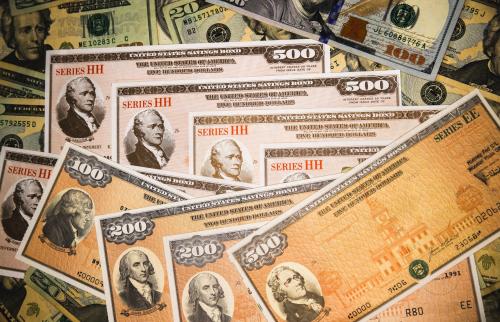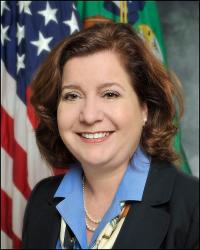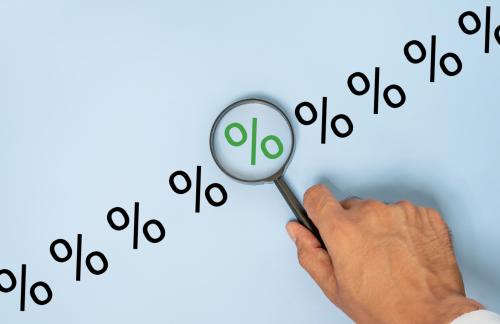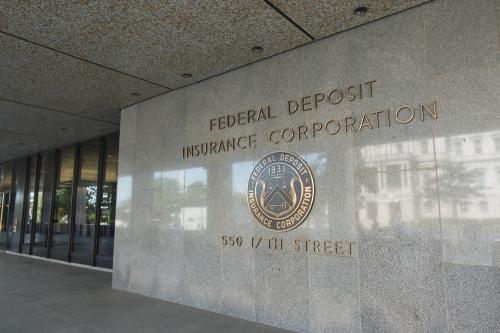At around $900 billion in transactions daily, the market for U.S. Treasuries is massive, not only in terms of quantity but also in terms of importance to the U.S. and global economies. The Treasury market is tied to interest rates, the value of the dollar, and financial markets around the world. So when shocks hit the Treasury market, as they did during the COVID-19 crisis, the ripple effects can be global. In a new paper, “Treasury market dysfunction and the role of the central bank,” Anil K Kashyap, Jeremy C. Stein, Jonathan L. Wallen, and Joshua Younger explore how the Federal Reserve reacted to the 2020 Treasury disturbance and present a proposal for future action. On this episode of the Brookings Podcast on Economic Activity, Senior Fellow David Wessel is joined by Kashyap to discuss the findings as well as the relevance to recent Treasury market volatility.
- Listen to the Brookings Podcast on Economic Activity on Apple, Spotify, YouTube, or wherever you like to get podcasts.
- Learn about other Brookings podcasts from the Brookings Podcast Network.
- Sign up for the podcasts newsletter for occasional updates on featured episodes and new shows.
- Send feedback email to [email protected].
Transcript
[music]
EBERLY: I’m Jan Eberly, the James R. and Helen D. Russell Professor of Finance at Northwestern University.
STEINSSON: And I’m Jón Steinsson, Chancellor’s Professor of Economics at the University of California, Berkeley.
EBERLY: We’re the co-editors of the Brookings Papers on Economic Activity, a semi-annual academic conference and journal that pairs rigorous research with real-time policy analysis to address the most urgent economic challenges of the day.
STEINSSON: And this is the Brookings Podcast on Economic Activity, where we share conversations with leading experts on the research they do and how it will affect economic policy.
The federal debt now stands at close to 100% of GDP, its highest point since World War II. Most of this debt consists of Treasury securities, bills, notes, and bonds that the U.S. government sells to raise funds. The Treasury market where these securities are traded is among the largest and most important financial markets in the world. Turbulence or dysfunction in the Treasury market typically spills over into other debt markets. It can also cause wider market disruptions and in extreme cases affect the macroeconomy.
Today’s discussion will focus on these issues. In a new BPEA paper, “Treasury Market Dysfunction and the Role of the Central Bank,” Anil Kashyap, Jeremy Stein, Jonathan Wallin, and Joshua Younger discuss risks of disruption in the Treasury market and how the Federal Reserve can best address such disruptions when they occur. Kashyap will join David Wessel, Director of the Hutchins Center on Fiscal and Monetary Policy for the discussion.
EBERLY: The authors emphasize that while the treasury market itself can seem remote from the economy, debt issuance is growing with the need to finance record budget deficits. So any disruption may be more costly than ever. Moreover, the Federal Reserve also conducts quantitative easing in the Treasury market. So interventions to smooth disruptions can be conflated with monetary policy. So clarity about the disruptions themselves is needed to have clarity about monetary policy.
STEINSSON: Yes, the authors have a really interesting proposal for a more surgical approach to Fed interventions in the Treasury market in times of stress.
Let’s turn it over to David.
WESSEL: Thanks, Jan and Jón, and Anil, it’s good to be with you. So, I think it would be useful if we could start by just explaining to people why the Treasury market is so important. It’s very big of course, there’s about $29 trillion in Treasury bills, notes, and bonds outstanding. But what makes this market so important to the U.S. economy, to the global financial system, and to households and businesses?
[2:58]
KASHYAP: Well, thanks, it’s great to be here. The Treasury market is, as you said, huge and Treasury securities are free of any default risks. We assume that the U.S. will pay its bills. And so whatever interest rate that the government can borrow at in this very, very large deep liquid market sets a floor for every other interest rate in the economy.
And so, if you’re a household or a business, you’re never gonna be able to borrow a rate below what the government’s borrowing at, at least the U.S. government historically. And so when Treasury rates are going up and down, most other debt is priced as a spread above that rate. And so if there’s dysfunction in the Treasury market, it gets transmitted very, very quickly.
WESSEL: And this also has a lot to do with how much we have to pay as taxpayers for the money we’ve borrowed, of course.
[3:50]
KASHYAP: Yes, there’s that. And it’s also the case because it’s such a safe and important market, Treasury securities are used for collateral and a lot of other borrowing arrangements. So, it’s a big part of the financial system. It’s linked up with the fact that the dollar is the world’s reserve currency and everybody prices in dollars, and so having dollar denominated debt is helpful. There’s a whole bunch of interconnected things.
WESSEL: Thanks. So, of course, some people buy Treasury bills and notes or bonds and hold them in their portfolios forever, but there’s quite a bit of trading from day to day, about $900 billion worth of transactions every day, and that’s before you get to the various ancillary markets, derivatives and stuff.
So, in your paper, you focus on major players in the buying and selling of Treasuries: asset managers, broker dealers, and hedge funds. So can you explain exactly what function each of them play and why they’re so important to the story you tell in the paper.
[4:49]
KASHYAP: Thanks. So, the starting point in the causal chain is to say, there are a lot of asset managers. So think of either pension funds, insurance companies, or say a bond mutual fund. And they’re all trying to earn returns that mimic the mandate they’ve received.
So, let’s take a bond mutual fund. They’re going to have a benchmark against which they’re measured. And the benchmark, if it was a long-term bond fund, would say, here’s how much we think a representative chunk of bonds would earn, and you should try to exceed that. Now the easiest way to exceed that would be to buy a lot of corporate debt. If you could buy 20-year corporate debt, that would nice. It would be long-term. It would pay a credit spread above the Treasuries like we were just discussing. And you’d be able to offer your investors more or less a product that they might seek. And it might be cheaper to buy it through a bond fund than buying an individual bond yourself. So, it works for everyone.
The problem is that there aren’t enough long-term corporate bonds for these bond funds to just buy directly. What there is a lot of is shorter term corporate credit. And so you could buy commercial paper or maybe you could a short-term commercial bond, but you can’t get the long stuff.
And so, to meet their benchmark, what a bond fund tends to do is buy what it can that comes with the spread over the government debt. And then use a derivatives contract to get the maturity to line up with what the benchmark is expecting. And so, they might buy a futures contract that would be held, that would give them long-term exposure to interest rates along with the corporate credit.
Okay, so far so good, that’s step one. Now step two is the futures market now is out of balance because there’s a whole bunch of money, we figure it’s an order of magnitude larger amount of money to be managed against these benchmarks than there is native long-term corporate credit. So that means there’s a lot of buying in the futures market and that puts the futures price kind of not quite in the middle of where it belongs.
And so, what we see is that the futures price is slightly distorted by this because there’s so many people on one side of the market. And that brings us now to step two: Who’s gonna take the other side of the futures market for the futures markets to work correctly? And that turns out to be hedge funds.
So, hedge funds will go in and they will go short futures to take the others side of trade to skim off that little profit that comes from the asset managers all leaning to one side of a boat.
Okay, but the hedge funds don’t want a naked bet on interest rates, so what do they do? They buy Treasury securities. And that covers them against movements and interest rates because they’ve got a short position in futures and a long treasury position.
Now that doesn’t sound very exciting. Hedge funds are in business to make money. And if they did that, the price gap between the futures price and the cash treasuries price is small, maybe one-tenth of one percent, or ten basis points. Now that’s not enough to get a hedge fund excited. So how does the hedge fund actually close the deal on this?
Well, they have to go and borrow to buy the treasury security. And that brings in our third set of players: the dealers and the money funds that are the ultimate lenders to the hedge funds. So, the hedge fund might put down $1 and borrow $99 to buy $100 worth of treasury securities. Now if you can borrow with that much leverage, all of a sudden that ten basis point gap gets opened up quite a bit, and that’s enough for them to make money.
Okay, so far so good. So we’ve got money funds, giving money to dealers to lend on to the hedge funds, who take the other side of the treasury futures market that starts with the asset managers. And that all works, as long as there aren’t disturbances or shocks, as economists would say. And there’s a lot of shocks that could show up that could disrupt all of this.
The biggest problem is that the hedge funds have put up very little of their own money. And so they don’t have to lose much for this process to unwind. So, suppose they lost money making an unrelated bet. Let’s say they made a bet on something like the price of oil, and they’ve lost money there and they now have to cover their losses. Well, they have to come up with the money from somewhere and they might decide to un-wind this trade. And when they do, somebody else has to step in. And that stepping in process is messy because the hedge funds didn’t need much yield. They only needed 10 basis points that they levered up to be willing to buy the Treasuries. But if you have to convince somebody who’s not gonna take so much risk with leverage, then the price has to move a lot to become tempting for somebody else to buy it. And when that price moves by a lot, that means interest rates would go up and then that transmits the shock.
So that’s the theory of the paper.
WESSEL: All right, so let’s unpack this a little better. So, basically, you have the asset managers, the pension funds and others, and they have a trade to manage their objectives. And the hedge funds have the mirror image of that trade. So, so far, so good.
But the hedge funds don’t wanna put all their money into this thing, so they borrow a lot. And they borrow from, say, money market mutual funds, where I might put money in. And as long as everything goes as people expect, We’re fine. But the world doesn’t work that way. And there’s a disturbance.
And suddenly, there’s a whole lot of people who want to sell Treasuries, and there’s not a lot of people who wanna buy them. And when that happens, the price of Treasuries goes down. And with bonds, when the price goes down, the yield goes up. That means the interest rates on long-term treasuries goes up, those are the rates that are very important to, say, for setting mortgages and stuff like that.
Now, you didn’t write this paper with your co-authors because you thought this was a fun intellectual experiment. We actually had some experience with this not so long ago. So talk a little bit about what happened in March 2020 at the onset of the pandemic and why that makes you think we got a problem we got to fix.
[11:09]
KASHYAP: So, in March of 2020, right at the beginning of the pandemic, there was a lot of volatility in financial markets. Nobody knew what was gonna happen. Maybe the economy was gonna shut down. Maybe there was gonna be somebody that was gonna go bankrupt or whatever. So, interest rates were highly volatile.
And in our example here, where, let’s say the hedge funds are on the short side of the futures market, if the price moves the wrong way, then that could mean that the hedge funds have to actually settle up and pay their losses on the futures contract. Well, that requires them to get money from somewhere. And in that case, part of what they did was they sold Treasuries, but the Treasuries they were selling were very, very highly levered so they didn’t need to have much of a yield. And now the Treasury price had to find a new buyer who might not be willing to hold it at such a high price and such a low yield. And so, the price had to drop and that meant the yield had to go up.
Now that happened violently in the first ten days of March 2020. And the way it ended was the Federal Reserve stepped in and said, you know what, we’ll buy. Okay but they bought in quantities that we’ve never seen before or since. They started out buying something like $70 billion of Treasuries a day and in one week, the last week of March, they bought $362 billion in Treasury securities. If you remember back to when we were talking about QE3 for the Fed, they were buying 80 billion a month and here’s 365 in one week and 70 a day.
And so, the Fed ended up becoming the market maker of last resort, buying everything in sight, but it caused all kinds of concerns. Number one, why bail out all these people by saving the people that were selling? They didn’t pay for any insurance. Number two, what was the Fed going to do with all of this once they owned it? It turns out we know later they took losses. And number three, maybe most salient at the time, was this confusion over why is the Fed doing this. It started out as kind of a financial rescue operation. But within a week, if you looked at the language the FOMC was using, they were talking about this being to support monetary policy. And eventually they kept buying for a long, long time.
So, what started out as financial stability morphed into monetary policy, and I think a lot of people looking back at that time say, boy, they wish the Fed hadn’t bought that much and had stopped the monetary policy action sooner.
Now that’s 2020 hindsight.
WESSEL: But we were kind of lucky that the Fed had to buy a lot of Treasuries and that was at a time when they were trying to keep interest rates low to support the economy and inflation was actually below their target.
So, one, it’s not hard to imagine, today is a good example, when you would have the Fed being torn. On one hand, we want to buy all these Treasuries because the market’s going nuts and we have to rescue the Treasuries. On the other hand, we’re trying keep interest rates high and tight monetary policy to fight inflation.
So, they were lucky that time that both of their objectives faced in the right direction. That wouldn’t always be the case.
[14:21]
KASHYAP: Yeah, that was exactly our concern was that if this happens again and you’re in a dilemma like you’re explaining where one mandate says, go this way, the other mandate says, go the other way, what do you do?
And so the novel idea in the paper regarding policy was, maybe you don’t have to actually buy everything. Maybe what you could do is just say if the hedge funds are running into stress and want to get out of this trade, instead of having them sell the Treasuries and you buy it, maybe you could ask them to sell both the Treasury and the futures contract that you have.
And that has three advantages relative to just buying. Number one, it’s crystal clear in that case that this is a financial stability operation because for monetary policy, you’d never buy the bundle of a Treasury security and the future. Number two, it means that you’re definitely hedged and you don’t have to worry about this business with losses. The contract will just unwind when the time comes and you don’t have any communication problem explaining why you’re doing this, how long you’re gonna stay in it, what does this mean for monetary policy? There’s just no signal in that dimension.
So, it’s in some sense much, much cleaner and a more surgical approach to the problem as opposed to just buying. And the last thing is, you don’t have to restore the market to fully function the way it usually did. We were talking about those ten basis point difference between the Treasury price and the futures price. You don’t have to buy the bundle so that you keep the price at ten. You could let it go to 50 or 70 or whatever and in the course of doing that, that would mean that the hedge funds that were showing up to sell to you would be taking some losses.
So, you would also have a little bit of protection against what economists call moral hazard, this idea of bailing people out who hadn’t really paid for any insurance. And so, you could design it kind of like the classic lender of last resort that they call Bagehot’s Rule, which is lend freely a good collateral, but at a penalty rate. And so we could buy these hedge bundles, but at penalty rate, so that we also don’t encourage more risk taking.
WESSEL: So basically, what we’re saying is, if I got this right, the hedge funds gotta get out of their positions. And if they were smaller or less leveraged and it wasn’t at a time of crisis, we might be saying, fine, take your losses. But we can’t afford to do that because it would be so disruptive to the Treasury market, which is so important as you explained in the beginning.
So what the Fed has basically done is saying, we’ll buy what you’re selling. And you’re saying, OK, but maybe an alternative is, you just take the trade that the hedge funds have already got. Just take it off. Either way, the hedge fund are getting out. You can structure it so they’re not completely bailed out. And you say it’ll unwind by itself. Is that because the derivatives expire? How does it automatically end by itself?
[17:27]
KASHYAP: Yeah, so you would have taken a derivative position that would match exactly the length of the Treasury security you purchased. So if you just hold them all the way to the end, which the Fed could do, or I suspect what they would really want to do is set up some sort of special purpose vehicle like they did in all of their exotic facilities to do this.
They’d have to get the Treasury probably to help them to capitalize the thing, but then the Fed would actually just be lending to this SPV and it would just hold the stuff until it runs off. And if the derivative wasn’t lined up exactly as long as they needed, they could roll over another derivative to keep it in place.
WESSEL: So the basic idea is, instead of buying all these Treasuries and then having them in your portfolio which then creates other problems, you just take this trade and over time it’ll shrink and you’ve solved the problem but you haven’t taken on all this baggage.
Alright, so we’re taping this in the middle of April and these days it’s dangerous to talk about the markets or President Trump’s tariff policy with more than 15 minutes notice, but we did see a very volatile treasury market in early April as the president changed his tariffs policy and there were some big swings in the stock market. To the extent we can tell, was what was happening in early April an example of what you feared of hedge funds undoing their trades and making things messy, or was it something else or was it more than one thing? To the extent that we know.
[18:55]
KASHYAP: Well, first of all, as my friends who are traders say, the long run is after lunch. And I’m a two-handed economist so the odds that I’m going to say anything was fully responsible is not going to be there.
So, I think there was a role for this kind of consideration. In my example, I said it was a futures contract, but the insurance companies and pension funds do it slightly different. They use an interest rate swap. And if you look last week, the swap pricing got dislocated in a way that seemed very strange and unusual.
This wasn’t as bad as March 2020. Many people pointed out that this didn’t get to full blown crisis, but it sure looked like it was heading that way. And we’ll never know because the tariff reversal kind of calmed people down a bit. But the possibility that something like this happens, I think is quite likely. It’s just so fragile. There’s something like a trillion dollars in this trade. And with the amount of leverage, all it takes is some shock that comes along that nobody was planning for.
Who would have thought the tariffs would be connecting to something that leads to chaos in the U.S. Treasury market? The usual story would be if there’s chaos in the world markets, people pile into treasuries. And that for sure was not happening. And there’s lots of stories about what was going on with that. Maybe it was foreign central banks selling. Maybe it was just that the pension funds are getting nervous or the hedge funds getting nervous, or redemptions from the money market funds that say they can’t lend. It seems like we’re not going to know for a while.
But what I do think this illustrated is the proof of concept that something like this can happen. Because I think when we presented the paper at the conference. I don’t think if people had written down the series of steps that were going to lead to this, people would have had tariffs in the first, second, or third item of their list. It just shows how interconnected everything is, and with this much leverage, it’s just a recipe for trouble.
WESSEL: Yeah, it was definitely timely. So, one issue here, as I understand it, is that obviously the market for treasuries has grown thanks to the large and growing federal deficit, which means we have to borrow more and more money. But the capacity of the intermediaries, the dealers, to step in and absorb and buy a lot of Treasuries or sell Treasuries when there’s some disruption hasn’t grown commensurately. And some of that, appears to be regulatory. That is, after the global financial crisis, we did things that have limited their willingness or ability to absorb large amounts of Treasuries in a moment of stress.
How much of a problem do you think that is, and could that relieve some of the risk of what you described?
[21:42]
KASHYAP: Yeah, there are several ancillary things that could ease the stress on this market. I don’t think collectively there’ll be enough, but you’re pointing to one of them, which is the fact that when one of these dealers buys a Treasury security, even though it’s got no credit risk, they have to hold a little capital against it and that makes them less likely to do it.
The other thing is the way the clearing of the derivatives works also requires some money to be posted to protect the clearing houses and you could improve clearing, so we’re all in favor of both of those things. I just think in the end, this is mostly though about whether or not the hedge funds get nervous and want to step out of the trade. And that means anything that threatens their ability to maintain risk.
It could just be prudent risk management by them saying, oh, the world’s more volatile. We don’t want to take quite as much leverage. Well, okay. Then that means somebody else has to step in. So there’s many channels through which this could go wrong, but if our diagnosis is right, what it means is the risk bearing capacity of the hedge funds is now integral to the way the Treasury market works. And anything that interferes with that can therefore gum up the Treasury market.
WESSEL: Okay, well, I think we’ll leave it there. Anil, thanks very much for the very clear explanation. And I hope we don’t have to test this again anytime soon but given what we’ve seen in the last few weeks, I suspect we’ll be visiting this question over and over and over again.
[23:09]
KASHYAP: Thank you, David.
[music]
STEINSSON: Once again, I’m Jón Steinsson.
EBERLY: And I’m Jan Eberly.
STEINSSON: And this has been the Brookings Podcast on Economic Activity. Thanks to our guests for this great conversation and be sure to subscribe to get notifications about new releases of this podcast.
EBERLY: The Brookings Podcast on Economic Activity is produced by the Brookings Podcast Network. Learn more about this and our other podcasts at Brookings dot edu slash podcast. Send feedback to podcasts at Brookings dot edu and find out more about the Brookings Papers on Economic Activity online at Brookings dot edu slash B-P-E-A.
STEINSSON: Thanks to the team that makes this podcast possible: Fred Dews, supervising producer; Chris Miller, co-producer; Gastón Reboredo, co-producer and audio engineer. Show art was designed by Katie Merris and promotional support comes from our colleagues in Brookings Communications.
The Brookings Institution is committed to quality, independence, and impact.
We are supported by a diverse array of funders. In line with our values and policies, each Brookings publication represents the sole views of its author(s).










Commentary
PodcastHow does the Federal Reserve affect the Treasury market?
Listen on
Brookings Podcast on Economic Activity
May 1, 2025